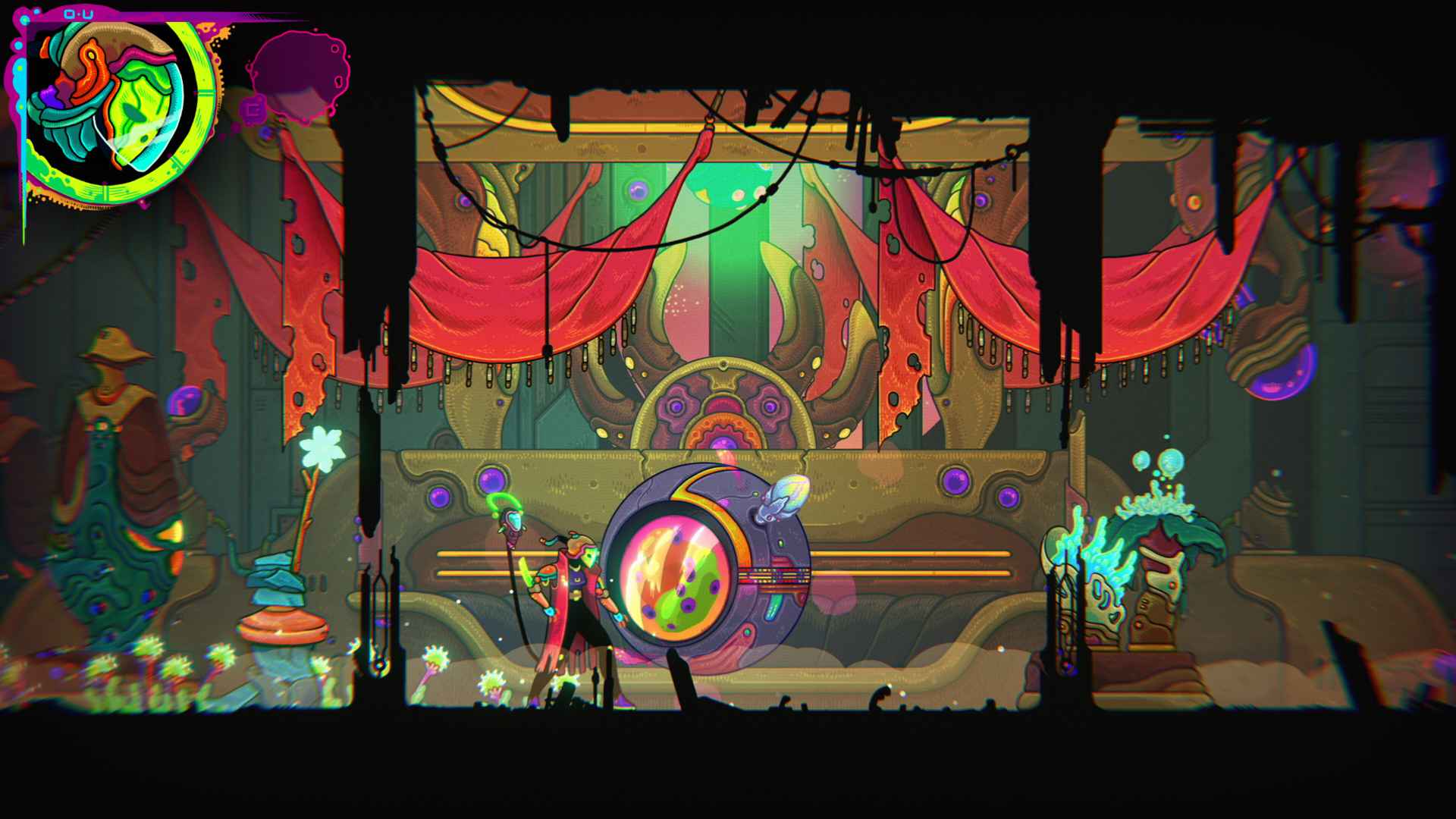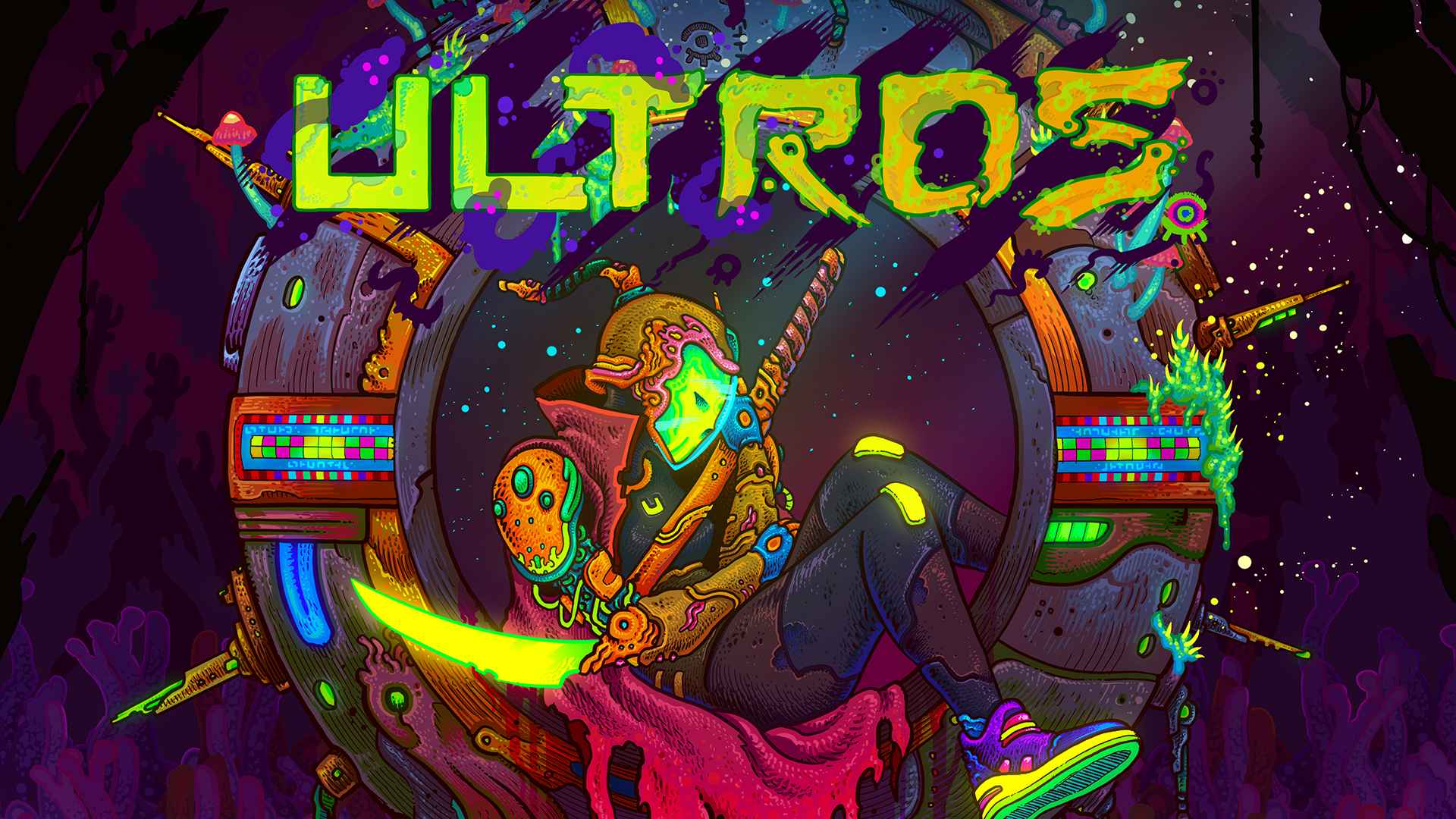Ultros Review
I always appreciate when a game tries something new, mechanically, artistically or narratively. Of course, innovation and creativity don’t mean much if the game isn’t engaging to play. Ultros is a new 2D Metroidvania and, if nothing else, it looks unlike anything else in the genre.
Trippy platforming
That look: definitely psychedelic. The brainchild of artist and musician Niklas “El Huervo” Åkerblad (Hotline Miami), its art is day-glo bright and full of those ornaments, mysterious figures and unfurling motifs that look a little like a Peter Max poster from 1968. Most of the environment is bio-organic rather than mechanical, which makes narrative sense. After all, you’re a cosmic gardener and the seeds you plant and grow are vital to your success.
But there’s potentially a small problem with all that retina-burning color and wall-to-wall visual energy: it can be difficult to distinguish important items, enemies, NPCs or things like seed beds. Recognizing this, the developers include a number of accessibility settings, like being able to desaturate or blur the background. This allows more critical features of the environment to pop out. I can see that folks with color blindness would be very frustrated without this feature. And while I enjoyed the bright color palette — for a while — it grew visually fatiguing.

The blocky sci-fi font that’s used for important item titles is likewise a combination of cool and frustrating to read. Here again, the developers come to the rescue with a more readable text option. For me, the overarching question is: if your art and fonts are in such need of player modification, is there maybe a conceptual problem? Anyway, the aesthetic is definitely distinctive, but on to game play.
The Next Layer
Art style aside, Ultros is a fairly standard-issue 2D Metroidvania with a strong emphasis on melee combat. Mechanically it plays all the expected notes of the genre. There are light and heavy attacks, rolling and dodging and a catalogue of special abilities you unlock by consuming organic items like harvested enemy body parts or plants that you’ve grown from seeds.
The gardening mechanic is another of Ultros’ gameplay hooks. Actually, in keeping with its theme, there are lots of ways to form bonds with nature. Sometimes, for example, you might feed a lifeform that’s blocking your progress. Ultros styles itself as a roguelite, so while the game’s structure necessitates re-looping through areas, the gardens you’ve planted are persistent, giving you success to healing items and upgrades without starting entirely from scratch.

Since ultra-demanding platforming is my gaming Achilles heel, I was pleased by Ultros’ relatively relaxed and forgiving traversal, which made exploration more enjoyable. As with nearly all Metroidvanias, level design includes lots of secret or at-first inaccessible areas that repay repeated visits. But if movement is forgiving, some gamers might find combat just a bit slow and inelegant. It isn’t bad, but neither the combat nor the game’s level design break new ground. Boss designs — though visually interesting — were sometimes mechanically reliant on exploiting a specific weakness or move, instead of player creativity. Of course, this is a problem common to many Metroidvanias or action RPGs.
Although it doesn’t go so far as having a survival crafting feel, the garden-planting mechanic offers a brief break from combat. It also ties into the game’s trippy narrative. Perhaps best described as opaque, Ultros’ story includes “themes of life, death, mental health and the cycles of karma.” The game takes place on a mysterious alien world called The Sarcophagus, the “cosmic uterus.” The Sarcophagus contains a powerful being called Ultros, whose energy pervades the world. The game isn’t voice acted and the tone of the script goes for a pseudo-poetic philosophical vibe. While the visuals and combat were often entertaining, I never warmed up to the slightly pretentious narrative and NPCs.
Sound and Light
Few recent games meld musical score and visuals as adeptly as Ultros. El Heuvo’s music blends together spacey layers of electronics with lyrical string textures and other acoustic instruments. During exploration, the gentle wash of music helps create a relaxed, sci-fi tone. The music doesn’t handle boss fights nearly as well and become repetitive during repeated attempts.

Ultros is a game with a very strong visual identity, trippy theme and a few unique mechanics, like its gardening system for upgrades and abilities. Strip away the psychedelic art and gauzy narrative, however, and you’re left with a somewhat familiar-playing 2D Metroidvania. That isn’t necessarily bad, but I wish the game’s combat and exploration matched the imagination of its art.
***PC code provided by the publisher for review***
The Good
- Trippy, colorful art
- Interesting gardening mechanic
- Enjoyable platforming
- Decent combat
The Bad
- Story is obtuse
- Some boss fights are unimaginative
- Visuals can be fatiguing without modification

